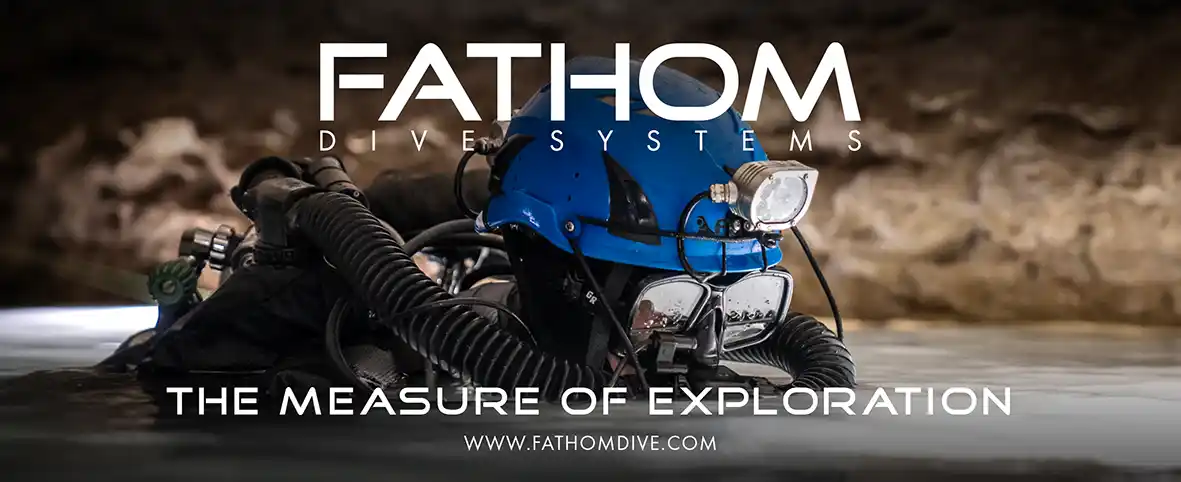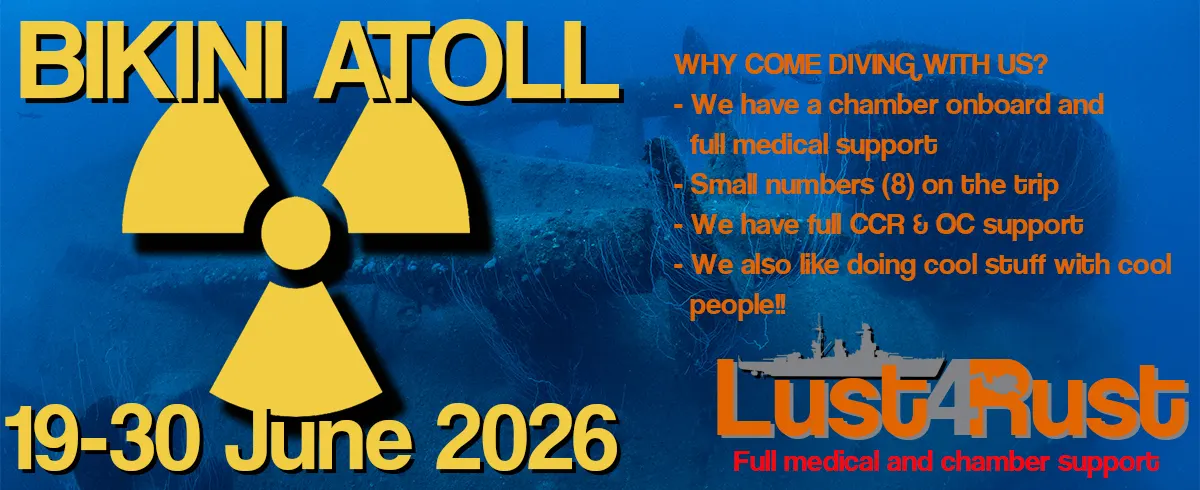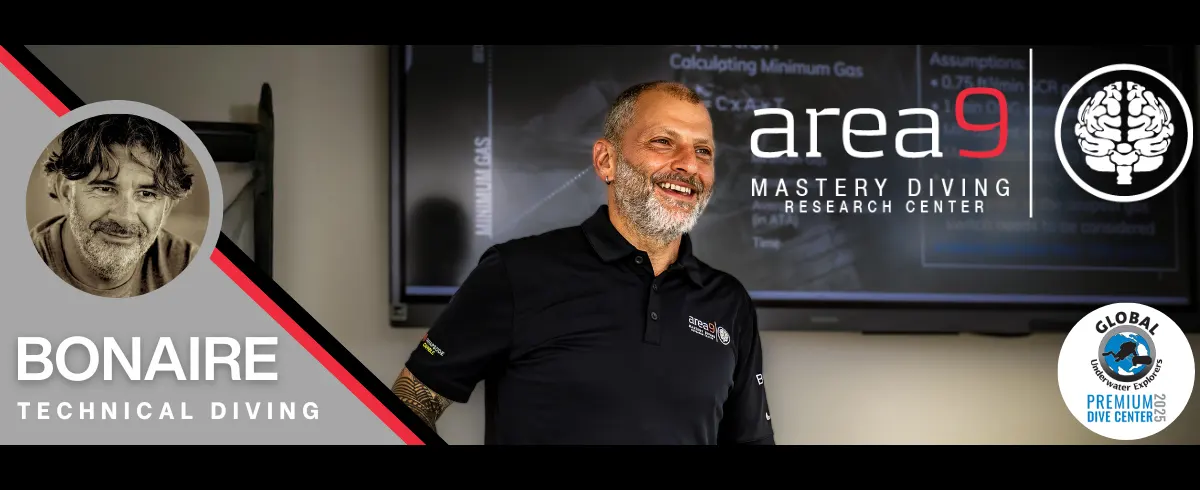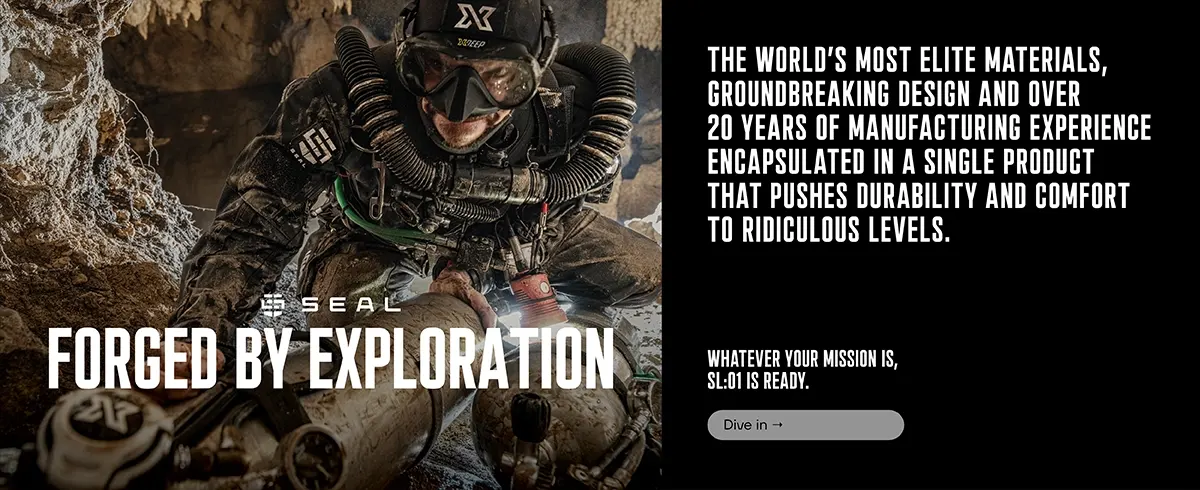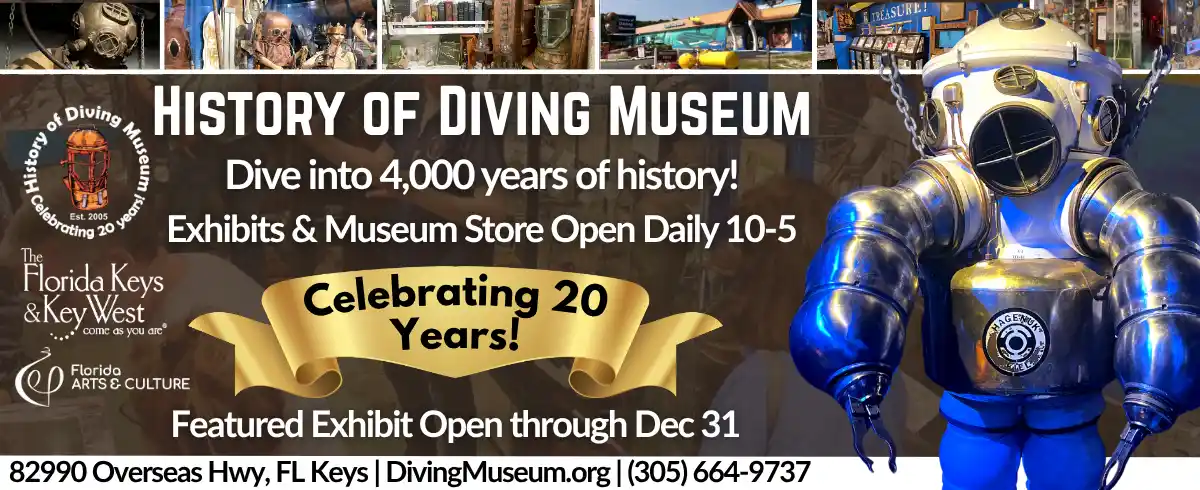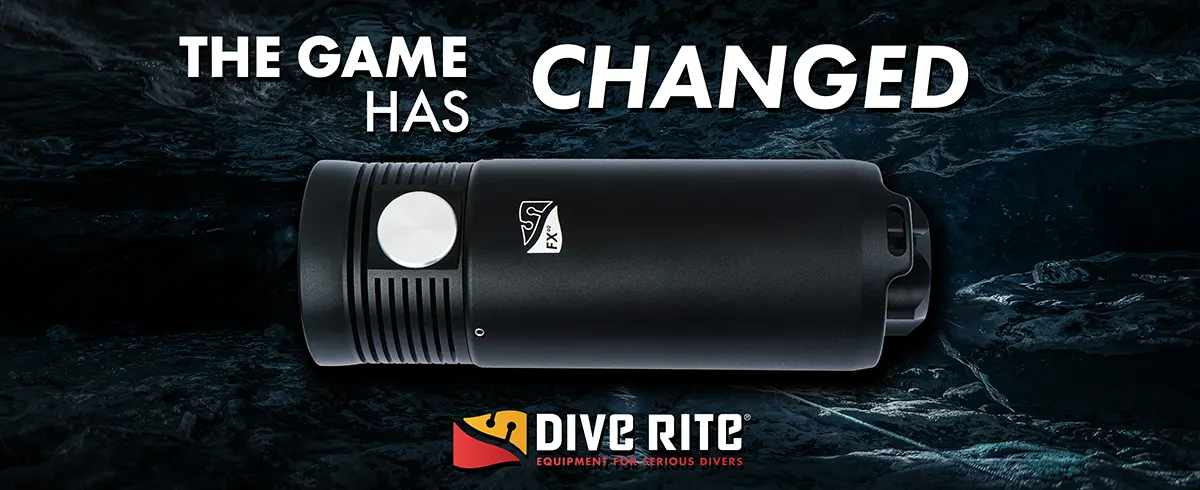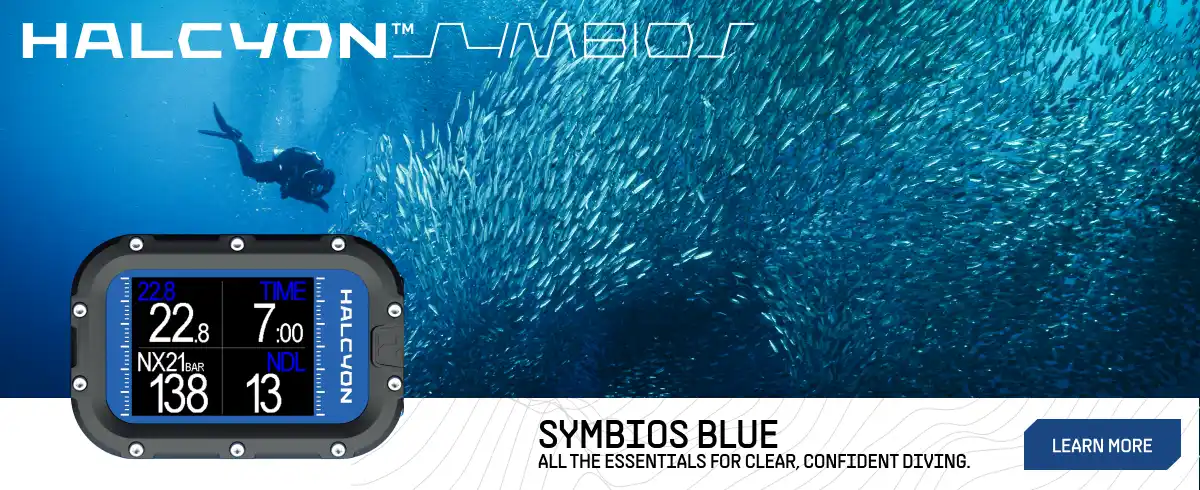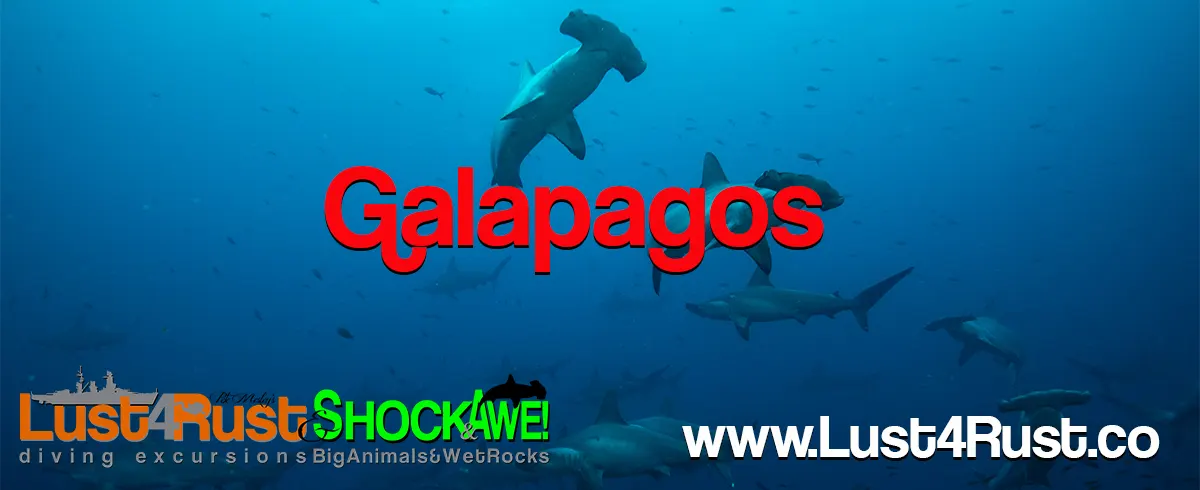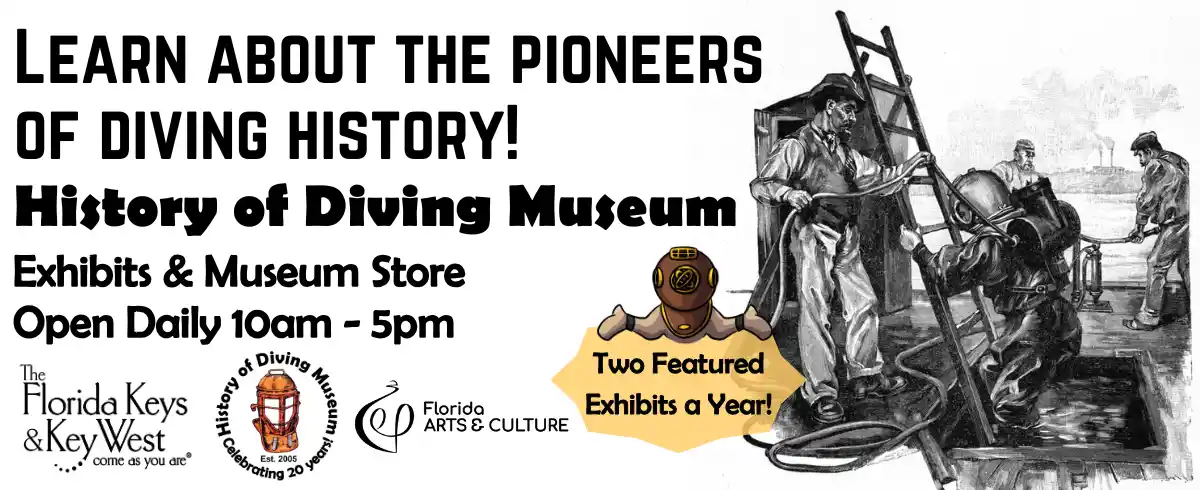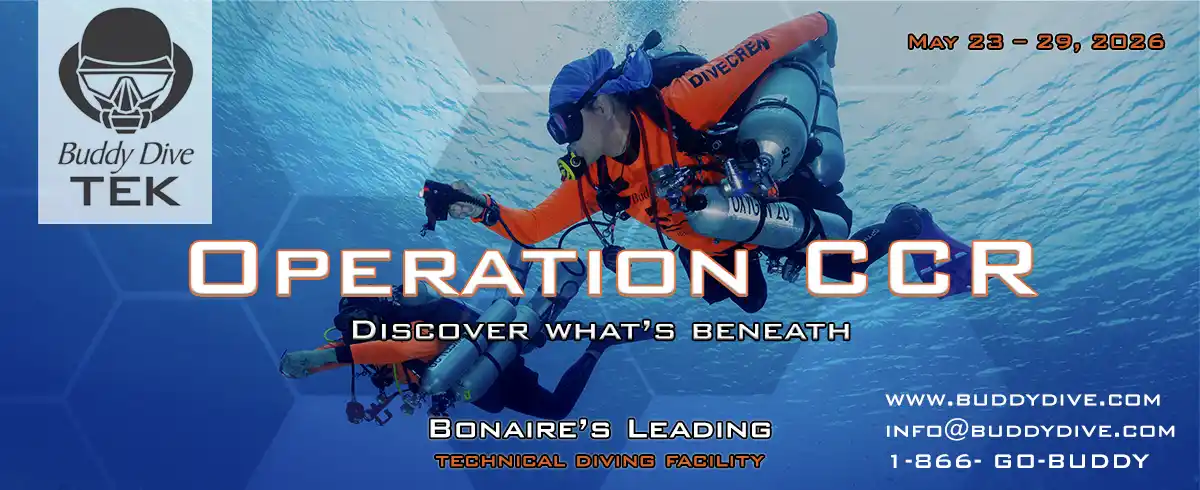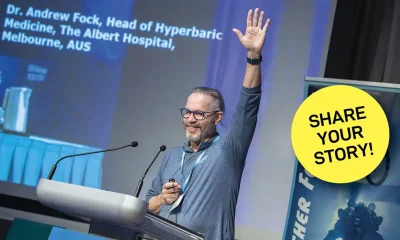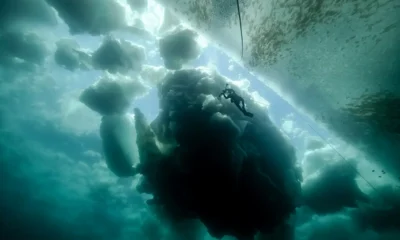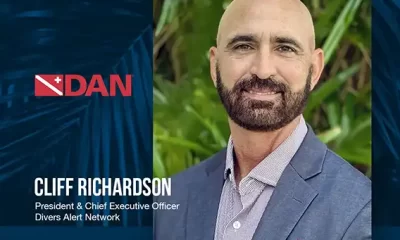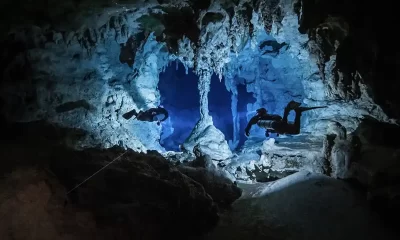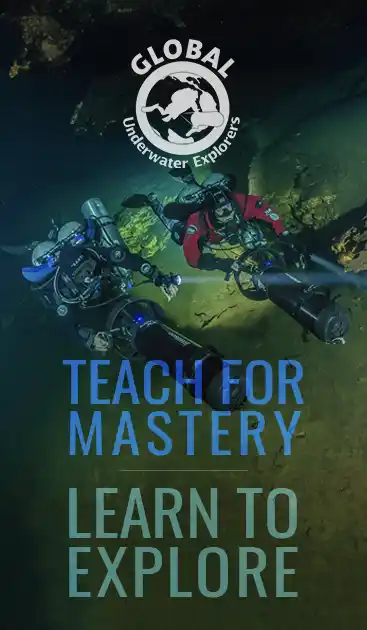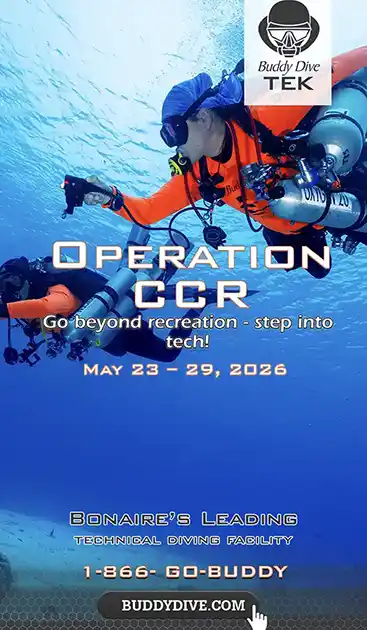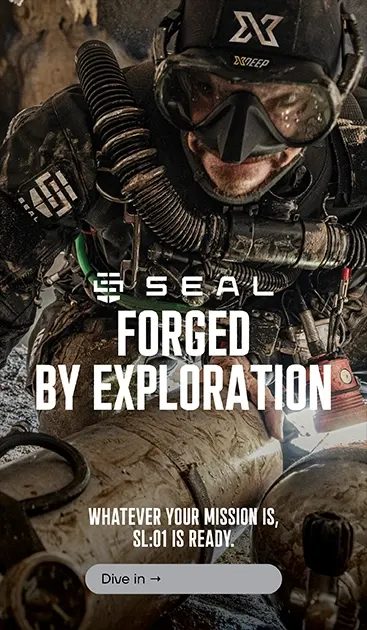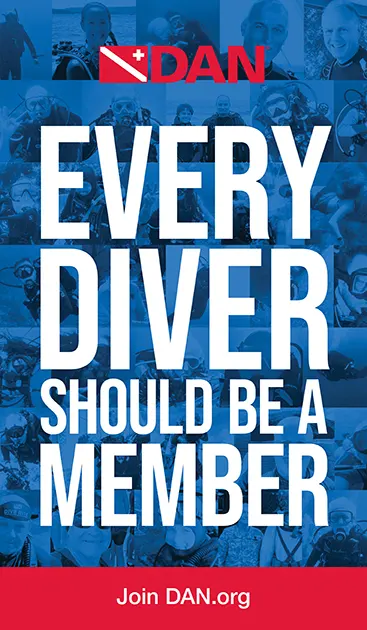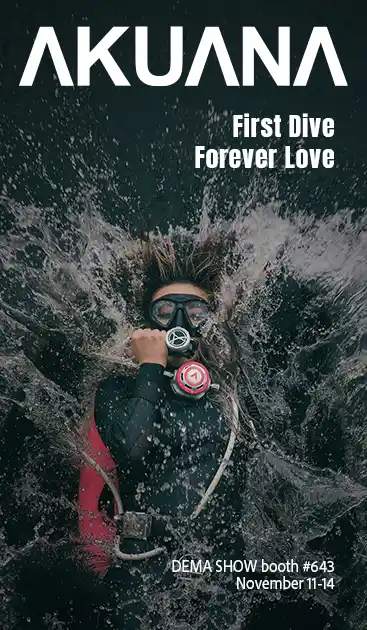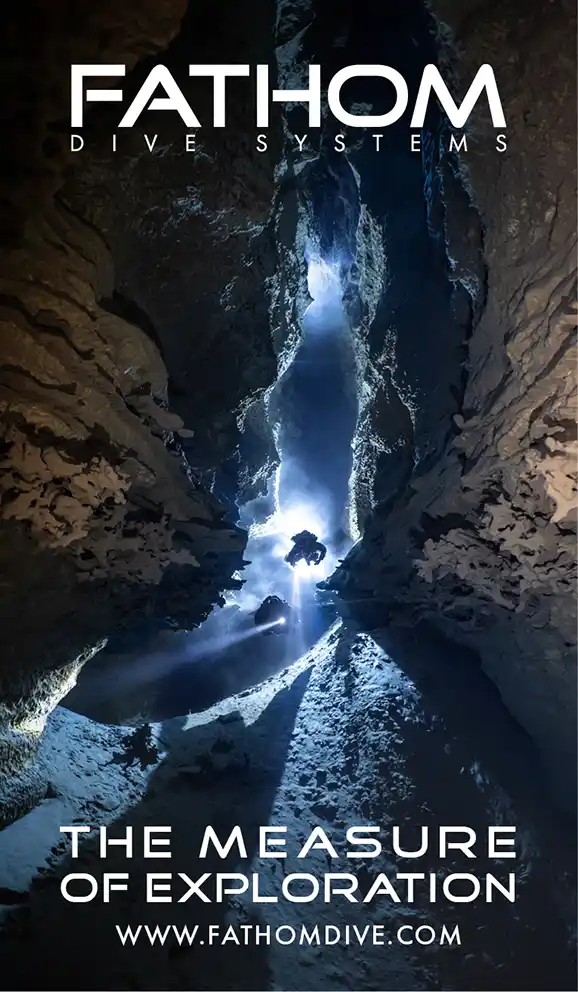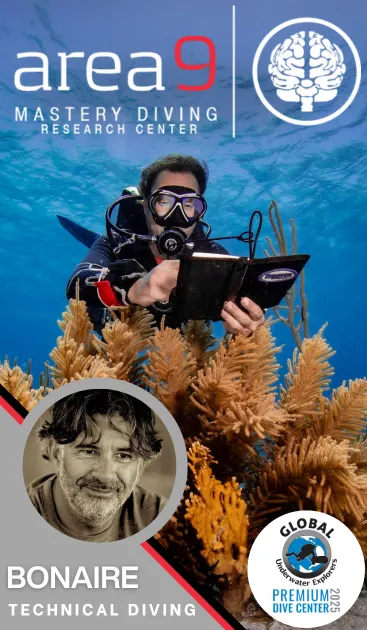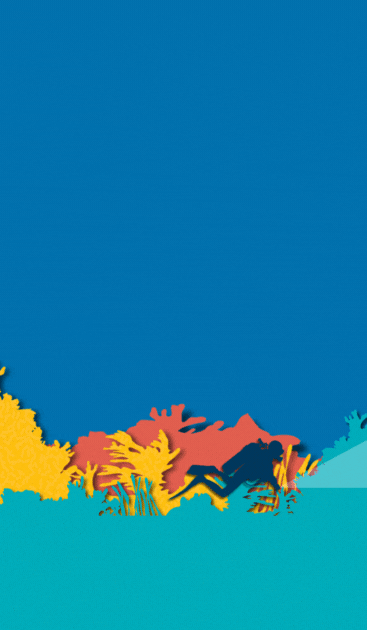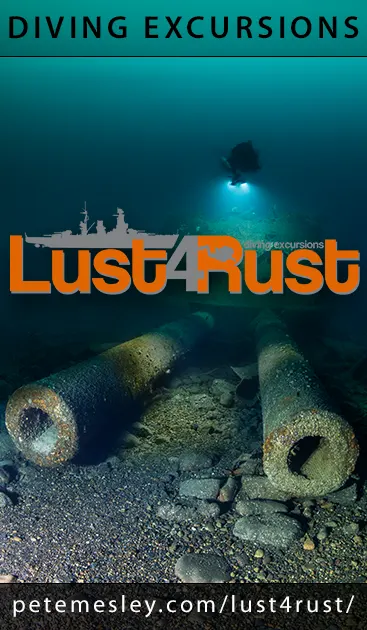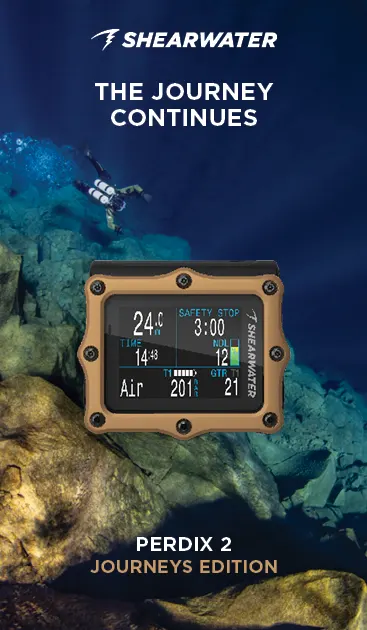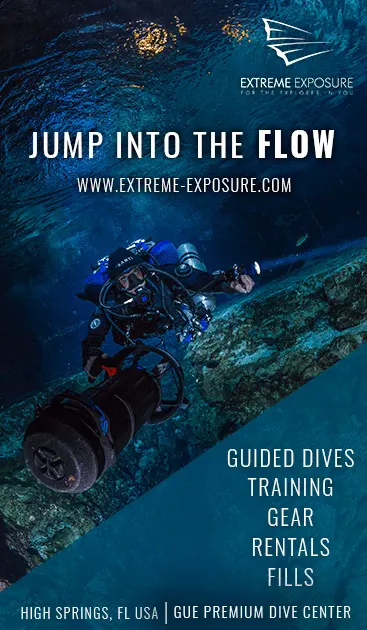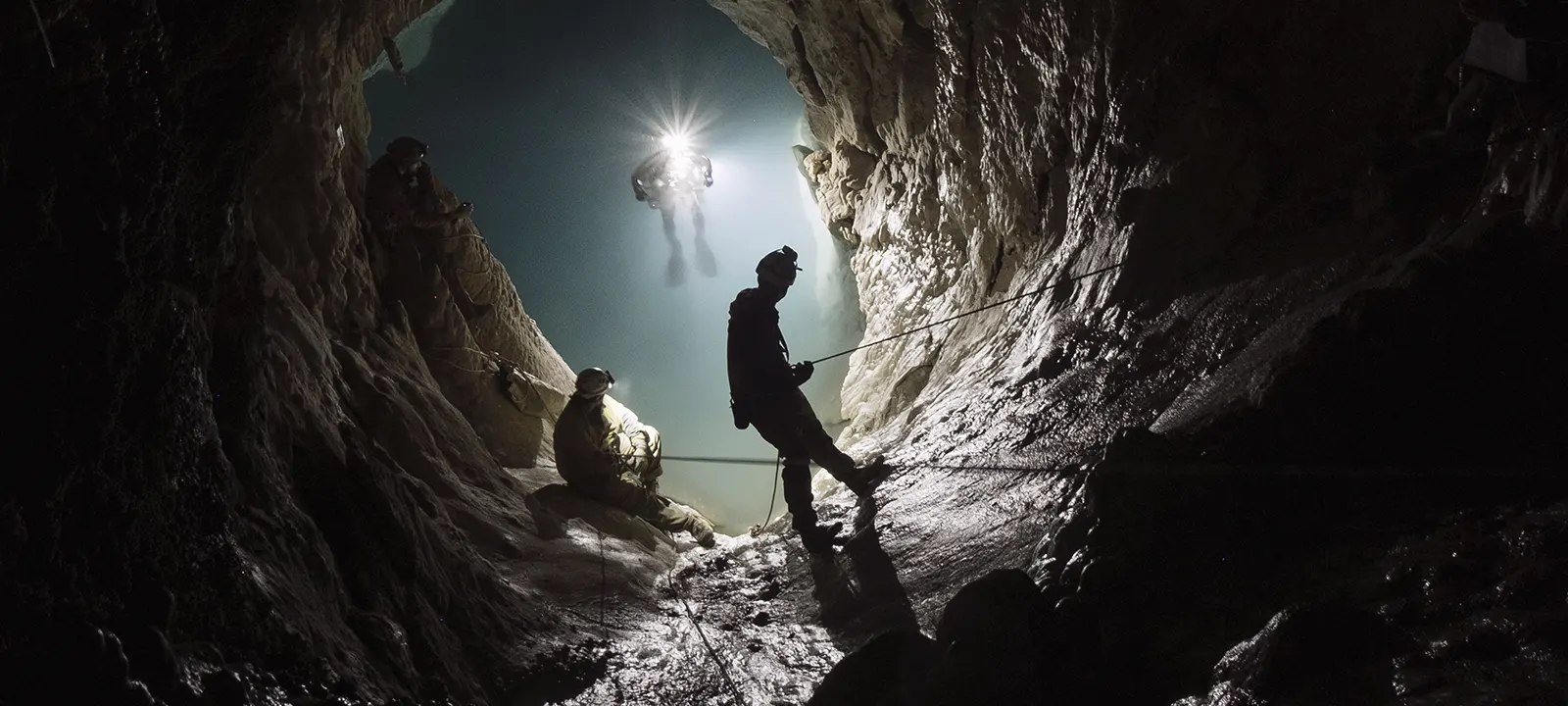
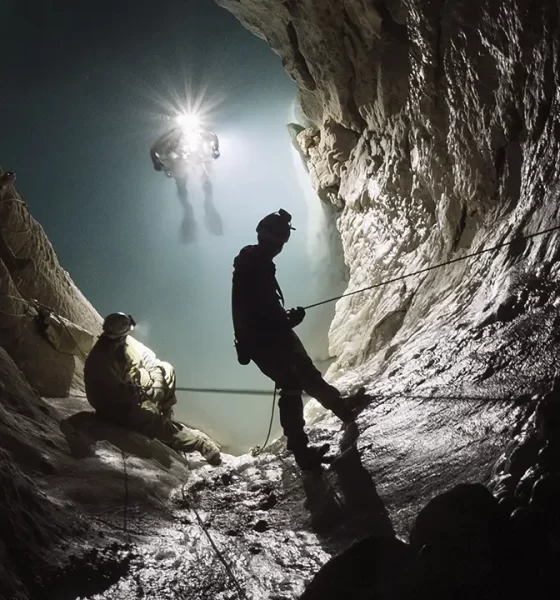
Cave
Beyond the Walkway: Diving Italy’s Hidden Giant, Frasassi Cave
Italy’s Frasassi cave system is a cathedral of mud, rock, and hidden lakes. Speleologist Simone Villotti and team push deeper into its sulphurous waters, carrying heavy loads and heavier determination. This is exploration the hard way.
By Simone Villotti. Lead image: Lago dello Svizzero, Simone Villotti resurfaces, Francesco Margiotta, Manuel Crisostomi and Pietro Taddei ready to assist him exiting the water, photo by Andrea Moretti
The year was 1983. I was only five years old, and in my child’s eyes the desire for adventure already sparkled. At that time, explorations extended just beyond the garden of my house, until my mother’s voice, like a familiar echo, brought me back to reality.
The memories of that distant spring are blurred, almost like a dream. But I can still feel inside me the emotion of those incredible spaces in the tourist cave of Frasassi. I remember that walkway that suddenly ended, letting my gaze run further, toward dozens of meters of stalagmites that I would have loved to reach running. Perhaps it was from there that my curiosity toward the unknown was born, a curiosity that still accompanies me today. Since then, many years have passed, I became a speleologist and, in 1996, I followed my first underwater line in the White Elephant Cave.
From that day on, I was never able to stop.
With time, my experience grew, but the curiosity remained intact—in fact, it increased. And it is precisely that curiosity that led me to explore dry and submerged caves in different parts of the world.
It was love, with a capital “L,” that steered my bow toward Central Italy. Here I met new friends and, perhaps by destiny, I returned to where it all began: in the heart of the Frasassi Caves.
Exactly where, as a child, my gaze went beyond the walkway… toward the invisible.

History of the place
The Frasassi Caves are today considered one of the most spectacular karst systems in Europe, but their exploration history is relatively recent. It all began in 1971, when a group of speleologists from the Gruppo Speleologico Marchigiano CAI of Ancona discovered the entrance of the Abisso Ancona, a gigantic underground void hidden in the heart of Monte Valmontagnana.
Among the pioneers of this feat was Fabio Sturba, doctor and speleologist, who together with Maurizio Bolognini descended for the first time along the vertiginous ladders that led into the depths of the system. That descent marked the beginning of an extraordinary scientific and exploratory adventure, which in the following years would reveal dozens of kilometers of tunnels, chambers, and conduits.
Over time, explorations pushed deeper and deeper, revealing environments of monumental size: stalactites and stalagmites of gigantic proportions, underground lakes, fossil and active conduits, and a delicate and fascinating subterranean ecosystem. Today more than 30 kilometers of caves have been mapped, and the system is still expanding.
Alongside speleological activity, Frasassi also became a destination of international tourism fame. The Grotta Grande del Vento, open to the public, welcomes hundreds of thousands of visitors every year, fascinated by the majesty and mystery of these underground environments. But while the tourist route shows only part of the system, beyond the walkway begins a world still waiting to be explored. It is precisely those remote and submerged areas, invisible to the common visitor, that are today at the center of our project. Because the history of Frasassi is by no means finished.
Connections with the territory
The Frasassi cave system is not only a geological masterpiece but also an element deeply rooted in the cultural, historical, and environmental fabric of the Marche region.
Man has always had a special relationship with these mountains. Near the natural entrances to the karst system, archaeological finds have been discovered that show human presence since prehistory. The entire area of the Gola della Rossa and Frasassi Natural Park, which today protects this heritage, is dotted with hermitages, ancient paths, sacred places, and traces of millenary settlements.
From a naturalistic point of view, the underground environment of the caves hosts biodiversity adapted to the extreme conditions of darkness and constant humidity: from blind crustaceans to cave insects, to rare colonies of bats. These subterranean ecosystems are extremely delicate and represent true natural laboratories for biology and speleogenesis. Even the surface environment is an integral part of the beauty and scientific value of the site: forests, gorges, vertical cliffs, springs, and surface karst phenomena create a unique landscape, in which the cave is only the most hidden yet most spectacular part.
Lastly, Frasassi is a symbol of Marche identity. It is a place of tourism, environmental education, research, and storytelling. And it is precisely in this connection between man, nature, and underground mystery that our project is inserted with respect and awareness: to explore, document, and enhance a heritage that belongs to everyone.

The encounter with the first modern explorer
My first encounter with Fabio Sturba was like a short circuit between past and present: it catapulted me into a world I felt so close and yet so distant. Fabio was one of the first to penetrate the depths of the Frasassi system, illuminating with the flickering light of a carbide lamp spaces that no one had ever seen before. Climbing steel ladders and hemp ropes meant experiencing the cave in a raw, direct, authentic way.
There is a photo I hold very dear: me and him, together on the landslide of the Abisso Ancona. It is one of those images that have not only documentary but emotional value. It is a symbol of continuity between generations of explorers. I read his book, Abisso Ancona, in one go, lying in a meadow. His words brought me back to where I would have wanted to be in that spring of 1983. Meeting him was like looking at my future through the eyes of the past. A bond that gave even more meaning to my exploration.
The birth of the idea of exploration
The idea of exploring the waters of Frasassi was born thanks to a special invitation: that of Amedeo Griffoni, dear friend and speleologist from the Marche region, today a member of the board of the Federazione Speleologica Marchigiana. It was he who proposed to me that I try to overcome a severe restriction inside a geologically young branch of the cave.

First Exploration – The Branch of the Angels
The Branch of the Angels is one of the least known but most fascinating areas of the Frasassi karst system. It is a geologically young branch, located on the right side of the Grotta Grande del Vento, right at the entrance of the tourist path. It begins as a narrow conduit, steeply sloping, at times even vertical, and winds for several dozen meters in an up-and-down of narrow and tortuous passages.
The restrictions are long and constant, but here and there small, beautifully decorated chambers open up: young stalactites and thin, pure-white candles alternate with formations still in the making, giving these corners a suspended, almost unreal atmosphere. The floor is covered with white gypsum mud that, in certain sections, completely fills the bottom of the conduit, making progress even more technical.
After about twenty minutes of progression and some inevitable contortions, the conduit finally widens and levels, allowing me for the first time to stand up. There a small mirror of crystal-clear water opens up. I decide to try to explore.
Finally, a comfortable space to prepare for the dive. Today the equipment is truly minimal: wetsuit, X Deep sidemount harness, hood, mask, and a single cylinder, no fins needed this time.
I tie off the spool and slide into the crack: a diameter of about 30 centimeters, tilted at 45 degrees, with the lower side filled with white gypsum mud. I manage to squeeze in and pass the first stretch, but visibility immediately drops to zero. In these conditions every movement raises milky clouds that swallow up all references. After a couple of attempts “by feel” and coming back up, I understand that today it is best to stop: conditions do not allow me to see what lies beyond.
Despite the difficulty, the Branch of the Angels remains a suggestive and mysterious corner that certainly deserves further exploration. Access is not simple, but the environment, so pure and still uncontaminated, tells a young story of this millennial cave, made of white mud, still water, and hidden passages.
“Frasassi does not make discounts. Its system is made of long tunnels, mud, narrow passages, and demanding climbs. Whoever wants to dive deep has to earn every meter.”
Some dive points require hours of approach on foot, often transporting heavy and bulky equipment in environments where every step is an obstacle.

Second Exploration – The Swiss Lake
This was our second major goal inside Frasassi. It is located about an hour and a half from the entrance of the Grotta del Fiume, along a route that we now know well, made of climbs, squeezes, and muddy passages that never fail to accompany us. Each time, stalactites and stalagmites remind us how majestic this cave is, even as we get covered in mud up to our necks. The lake is located exactly along the traverse that connects the Grotta del Fiume to the Grotta del Vento, and the thrill of discovering what lies hidden in its waters keeps us all on edge.
To reach it we rig a drop of about thirty meters, suspended among immense columns and stalagmites. From up there the water appears an intense, clear, inviting blue. Before diving, however, there is always the same routine: extracting the equipment from the bags, which are invariably covered in mud, and trying to keep it as clean as possible. Some team members have by now perfected this phase, moving while hanging on ropes in mid-air, inventing always new and creative techniques to transport everything through narrow, dirty, and damn muddy passages, without compromising the expedition.
Once ready, I put on all the equipment, except for the tanks: those I entrust to my friend and faithful companion Manuel, who descends right after me and brings them down to the water’s edge. Entering the water clean remains an almost impossible feat, but we try every time.
As soon as I dive, I find the line left some time ago by my friend and great explorer Gigi Casati: for me it is a precious reference, a safe base from which to start searching for new unexplored areas of the lake. I follow some unlined tunnels that always bring me back to connect with the main line, and so I manage to orient myself. During exploration I surface in two different points: the first is a shaft that opens not far from the lake’s surface; the second is on the left side, where a tunnel begins to gently descend.
I follow it, and the water, meter by meter, becomes more and more sulphurous. A white haze thickens progressively, reducing visibility and transforming the environment into something almost unreal. The unmistakable sensation is always the same: that pungent smell that seems to enter my nose despite the mask. It is a constant reminder of how much attention these dives in sulphur water require: here you can never let your guard down.
Frasassi is cave-diving in the truest, rawest sense of the term: it is not about simple pools or sumps. Here we are talking about real galleries, flooded, deep, unpredictable. Environments that, to be explored, require collective work, vision, and respect. And a huge, huge amount of determination.

Third Exploration – The Black Dwarf
“Not all doughnuts come out with a hole”… and the exploration of the Black Dwarf was the perfect proof of that.
We set off as always loaded like mules, with our bags full of equipment: 6.8-liter Carbon Dive tanks, the trusty Xdeep Stealth Rec sidemount BCD, regulators, suits, and fins. Each of us knows the routine: hours of progression through muddy tunnels, restrictions that seem never-ending, and passages that force us to crawl. At the end, we find ourselves above the slide that leads to the lake, ready to rig two abseil lines. The slide is almost vertical, about thirty meters that lead us to a new, virgin mirror of water.
I descend first, just to take a look and assess how to tackle the lake. As soon as the light of my torch hits the surface, I immediately realize something is strange: the water is black. But not the transparent black of depth, rather a milky, turbid, almost solid black. It is an accumulation of suspended mud, a gelatin ready to trap anything that dares to disturb its stillness. We all remain silent, staring at that dark mass that seems to mock us, then, as often happens in the most absurd moments, Manuel breaks the tension: he pulls out a beer, opens it with a smile, and the sound of the can popping makes us all laugh. Yes, the great work of carrying the bags this time did not lead us to a plunge into the unknown… but morale stays high, because exploring also means this: accepting the unexpected.
We take advantage of the day to look at two other small pools in the area, take notes, and then begin the long return. And outside the cave, as tradition dictates, we all throw ourselves into the river to wash off the mud and hours spent underground. While the running water gives us back some freshness, our minds are already elsewhere: we are already planning the next target, one of the most demanding. Because exploration never stops.

Fourth Exploration – The Nameless Lake
It is a very hot Tuesday at the end of July when we begin setting up our base camp at the CAI refuge of Jesi, just above the village of Genga. From there the view stretches across the Frasassi gorge, a spectacle that never ceases to move me. This time the goal is the Nameless Lake, decidedly distant from the entrance of the Grotta del Fiume. As if that were not enough, separating the doorway from the lake are drops, climbs, and restrictions, some rather severe: all bags must stay under 28 centimeters on one side in order to pass through the tightest point.
For an entire week, more than twenty people, arriving from all over Italy – some from Puglia by train, some from Tuscany, some from Lazio – will take turns transporting all the material in and out. The first to arrive at the refuge are me, Manuel, and Francesco, the doctor who will accompany me in this adventure collecting valuable data to better understand what happens to a cave diver when, after a dive, he has to face hours of progression through ropes and muddy passages.
On Wednesday everything is ready for entry. Thursday morning it is the first group’s turn: Luca Morgantini from Spoleto, Angelo Fabbrizi from Rome, Emma Perticai and Alessandro Rossi from Arezzo, Jonathan Socci from Offagna, Giacomo Cingolani from Jesi, Francesco Dell’Omo from Rimini, Manuel Crisostomi from Montefiascone, and Eugenio Griffoni from Jesi. With them goes in most of the equipment. We had already re-rigged the critical points and replaced the old ropes: the group moves very quickly and in less than ten hours manages to reach and return from the dive point.

The next day it is my turn. I am accompanied by a group of trusted companions: Michael Mengoni (Jesi), Francesco D’Aniello (Terlizzi, Bari), Eugenio Griffoni (Jesi), Manuel Crisostomi (Montefiascone), Francesco Dell’Omo (again, this time as doctor), and Giulia Bologna (Jesi). It will be a long day: I will have to reach the dive point, explore as much as possible, and then exit.
At the end of the narrow conduit that leads to the lake, a drop into the void of about 15–20 meters opens up. It is like a window thrown wide open onto an enchanted world: two lakes of extraordinary beauty. The spot where I can change is tiny, one meter by half a meter, perched between a 20-meter drop and a couple of stalactites. It is certainly not the ideal place to drop something… or to slip. Dressing here is not simple: we are covered in mud and we must try to enter the water as clean as possible, not a small feat.

I undress and put on the undersuit, very light to reduce the weight of transport and ballast: a Santi Flex 80, 220 grams of Primaloft fabric that allow me to stay in the water a couple of hours with only 4 kilos of lead. The water is about 12–13 degrees, the limit for that type of protection. Before finishing dressing, Michael – as nurse – takes my parameters: blood pressure, oxygen saturation, and so on. Then I put on the drysuit, the BCD, prepare lights and tanks. With me I have a 360° camera and a powerful Easydive light of 28,000 lumens, now an inseparable companion. I am ready to slide down to the water along a slope incrusted with stalagmites. Bringing kilos of mud along is inevitable, so I rinse everything as best I can and prepare for the dive.
I have three clear objectives: to explore, to map, and to bring back as many images as possible.
The surface and the first 8 meters are clear; only a halo of residual mud follows me from the equipment. I already have an idea of the direction to look: toward another lake not far away. But first I look around to evaluate alternatives.
At 13 meters I find a promising meander. The walls are very white, sculpted into delicate shapes: thin white blades that break at the slightest movement of water. The combination of microbial precipitation and limestone corrosion creates a fragile and unique environment. The researcher Jenn Macalady, who has been studying Frasassi for twenty years, always warns: “The aquifer is very sulphurous, better to limit the time in the water when sulphides are high. Data on absorption through the skin are still little known.”
I proceed laying line with the utmost delicacy. The meander alternates squeezes of 30–40 centimeters with openings of a couple of meters. The further I go, the worse the visibility becomes. I left the 360 and the light switched on, hooked behind me, and I feel them knocking against the walls. After 40 meters I reach a fork: a blade divides the passage in two. By eye I choose the left, but after a few meters I find a restriction that completely closes. I try to go down, nothing doing. I go back, fix the line, and take the right branch.
The depth remains stable between 12 and 15 meters. I look for solid tie-off points, but the rock crumbles under my fingers. Visibility is reduced to half a meter and the water is so sulphurous that I can smell it through the mask. Another 60 meters of line and I realize it makes no sense to continue: too murky, too aggressive. I turn back and carefully recover the line, always kept taut. At the fork I create a stable end of line, then extract the Surveyor for the survey. On the way out I map at 21–27 meters per minute, a good pace, until I reconnect with the clearer area of the lake.

I still have energy for one last look on the other side. The meander restarts, narrower: I follow it for a few meters until the restriction becomes impassable. I then decide to descend to seek the bottom of the lake. I tie the line to a solid prow and let myself fall into the milky white. At 28 meters visibility is zero, a wall of sulphurous suspension. I feel a tingling on my lips: a clear signal that it is time to go back.
On the surface Michael, Francesco, and Eugenio await me, smiling and full of questions. I hand them the tanks, get out of the water, and collect the medical parameters: O’Dive, oximeter, blood pressure. We organize the bags with obsessive precision, aided by the Easydive 20,000 lumen spotlight set to illuminate the change area. I put my muddy suit back on and am ready to leave. Michael and I exit first, while Eugenio and Francesco clean the area of old debris from past expeditions.
Outside there is still a ray of light. We are tired but happy, after so many hours in the cave. The idea of a shower is a mirage, so we throw ourselves directly on a pile of gin and tonics. The evening is festive, but we know the work is not finished: we still have two days to carry everything back out. Luckily new arms arrive: Michael Mengoni, Eugenio Griffoni, Francesco D’Aniello, Thomas Sperandio Iacomucci, Lino Bedini, Zamir Dekavelli, Alex Nati, and Alessio Del Brutto. I take a day of recovery and arrange part of the equipment, then return the last day with Manuel and Valeria to retrieve the last things.
It was an intense adventure, perhaps one of the hardest. But as always, what made the difference was the team: incredible, close-knit, tireless.

Choice of equipment and technical adaptations
The environmental characteristics of Frasassi — narrow passages, persistent mud, long approaches — impose very precise technical choices. In this context, lightness, compactness, and efficiency become fundamental elements.
After numerous tests, I found in sidemount-configured rebreathers and carbon cylinders the ideal combination to tackle this type of dives. My adventure companion is the Divesoft Liberty SM CCR, a compact, lightweight rebreather, designed specifically for sidemount: less than 20 kg ready to dive, reliable performance, and minimal bulk. I could not ask for better to move with agility between the narrow, muddy walls of Frasassi.
When conditions require it, I pair it with a second rebreather, or with one or two 6.8-liter 300 bar carbon cylinders, which guarantee autonomy without compromising manageability. In environments like this, weight and dimensions really matter: managing to create bags under 10 kg is not just an advantage, it is a necessity. It allows porters to move more easily through restrictions, reduces the risk of damage to the equipment, and enables more efficient and safer logistics. Every detail — from the type of valve to the orientation of the connectors — is studied to minimize friction and maximize functionality in an environment that does not forgive mistakes.
“Frasassi is not just a cave to be explored: it is a test bench for equipment and the most advanced technical choices of the cave diving world.”

The future of exploration
The potential of the Frasassi system is truly enormous. If energy and resources allow, this project can continue for years, progressively expanding our knowledge of the submerged and less accessible sections of the cave. One of the main objectives is not only exploration itself, but sharing. Through images, videos, surveys, and data, we want to show what lies beneath the surface of the water, in those places that few have the chance to see with their own eyes.
With this project, we also want to promote a new approach to exploration: open, collaborative, based on the dissemination of results. We believe that sharing information, routes, obstacles, and successes can help future generations of explorers to go even further.
But not only that: telling what we discover also means opening a window for those who will never be able to set foot in those places, offering them the possibility to imagine, to know, and to marvel. In the end, exploration only makes sense if it is shared.
Team
This project was only possible thanks to an exceptional team: Manuel Crisostomi, Eugenio Griffoni, Alessio Luppattelli, Roberta Sperduti, Valeria Bertoldi, Andrea Moretti, Alessio del Brutto, Alex Nati, Zamir Dekavelli, Lino Bendini, Thomas Sperandio Iacomucci, Francesco D’Aniello, Michael Mengoni, Giulia Bologna, Francesco Dell’Omo, Giacomo Cingolani, Jonathan Socci, Alessandro Rossi, Emma Perticai, Angelo Fabbrizi, and Luca Morgantini. The Gruppo Speleologico Jesi (CAI Jesi) provided vital speleological support, while DAN Europe partnered on physiological monitoring and research. Among the team, Francesco Dell’Omo served as physician, Manuel Crisostomi as field operations coordinator, my partner Roberta Sperduti in diving support and communication, Eugenio Griffoni on permits and institutional relations, and Andrea Moretti, Alessio Luppattelli, and Valeria Bertoldi on visual documentation. And thanks to all the team members, who never hold back in front of mud, weights, fatigue, and darkness: you are the true driving force of this project.
“If it can inspire someone to dream, study, protect, it will truly have left a mark.” Simone Villotti

Equipment List
- BCD Stealth Rec Wing / Tec Harness, BCD Stealth Tec Redundant Bladder by XDEEP
- Drysuit Elite Plus, Heating Vest Flex 2.0 by SANTI DIVING
- Surveyor Navigation Console by SEACRAFT
- Liberty Sidemount CCR, Freedom+ Computer, DNA Analyzer, Reel by DIVESOFT
- Revolution 21000 Light, Revolution 360 Light by EASYDIVE
- Blue Flexglove 1.5 mm by K01
- Cylinders 6.8 L & 10 L by CARBONDIVE
- Sidemount Valves by NAUTEC
Enjoyed this read? Here are more stories that tie into it.
DIVE DEEPER
InDEPTH: Meet The British Underground by Michael Thomas (2020)
InDEPTH: From GUE’s membership magazine QUEST “British Cave Diving: Wookey Hole and The Cave Diving Group” by Duncan Price
InDEPTH: Exploring and documenting sa Conca ‘e Locoli cave 2021 by Andrea Marassich (2021)

Simone Villotti has been an active diver since 1992 and began caving shortly thereafter. In 1996 he combined these two pursuits with his first cave dive. From the early 2000s he embraced modern training techniques, progressing from twin 20s to rebreathers, which he has used for more than twenty years. He is now a technical diving and rebreather instructor, specializing in sidemount CCR, where he conducts both training and exploration. His expertise is built on extensive field experience, shaped by successes, challenges, experimentation, and continuous collaboration with colleagues in the diving community. In recent years, Simone has led and participated in numerous exploration projects in Italy and abroad. His work focuses on advancing the understanding of underground environments and contributing data, imagery, and surveys to the broader diving community. For him, exploration remains a tool for shared knowledge and collective progress. You can follow Simone’s projects and updates on his website, Instagram, Facebook, Threads, and YouTube. He can also be reached directly at s.villotti@4freeworld.it.
Andrea Moretti is the photographer and documentary filmmaker of the team. His speleological images are collected on the website www.andrea-moretti.it (currently under construction, but intended to become the official repository), as well as on his social media channels: Facebook and Instagram.

